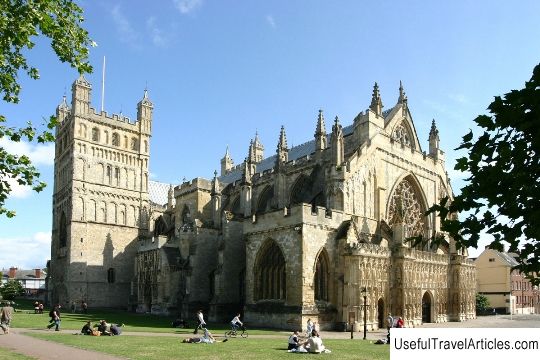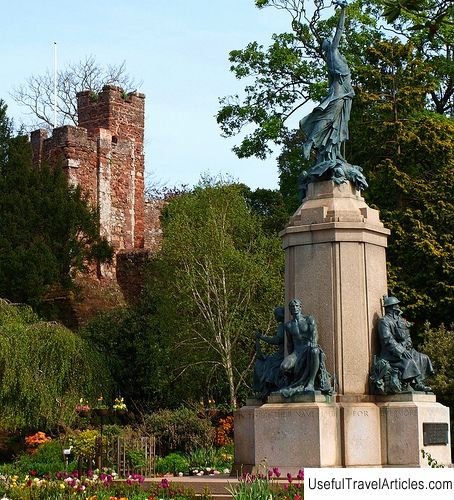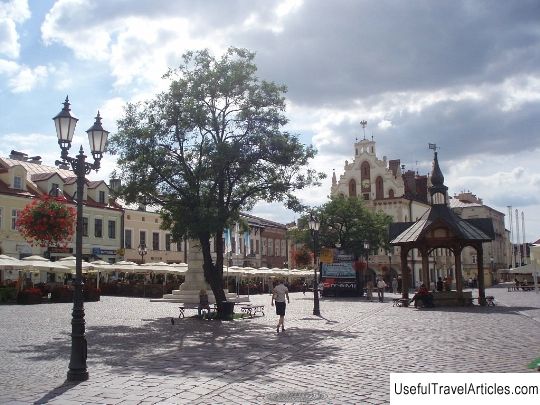Exeter Cathedral description and photos - Great Britain: Exeter
Rating: 8,1/10 (689 votes) 
Exeter Cathedral description and photos - Great Britain: Exeter. Detailed information about the attraction. Description, photographs and a map showing the nearest significant objects. The title in English is Exeter Cathedral. Photo and descriptionThe first mentions of St. Peter's Cathedral in Exeter date back to 1050, when the throne of the Bishop of Devon and Cornwall was transferred to Exeter from the city of Crediton. Exeter already had a Saxon Church of the Virgin Mary and St. Peter, and a large Norman-style cathedral was not founded until 1133. In 1258, the cathedral began to be rebuilt in the style of the `` decorated '' Gothic, modeled after the nearby cathedral at Salisbury, but most of the Norman structures have survived, including part of the walls and two massive square towers. Exeter Cathedral has the longest vaulted ceiling in England because it lacks a central tower. In addition, the cathedral has many more sights and original features that make it unique. The Great East Window is an excellent example of 14th century stained glass art. During World War II, the window, along with other historical values of the cathedral, was hidden in a bomb shelter in Cornwall. This saved it from destruction, because the cathedral was badly damaged by bombing in 1942. The choir of the cathedral is home to the earliest Misericords in England - props that gave monks or canons the "merciful" (hence the name) the opportunity to sit down during a long service, and from the side, a man in a long loose cassock looked standing. Among the 50 misericords, no two are alike, they depict animals, mythical creatures and the so-called "green people". "Green people" (spirits of the forest) - Another attraction of Exeter Cathedral - images of faces or torsos, braided and sprouted with leaves and branches. Initially, it was a pagan symbol of fertility and renewal of nature, which was then adopted by Christians. Exeter Cathedral has the largest number of such images, both carved in wood and stone. The unique Minstrel Gallery in the nave of the cathedral dates from around 1360. The gallery contains 12 sculptural images of angels playing medieval musical instruments: zither, bagpipes, oboe, mole, harp, trumpet, organ, guitar, tambourine and cymbals; two more instruments are unidentified. On the south tower of the cathedral there is a belfry of 14 bells, and on the north tower there is only one large bell called Peter. The Exeter Book, the largest collection of Anglo-Saxon poetry of the 10th century, has been kept in the cathedral since the 11th century. In addition to poetry, the book contains riddles, some of them are very obscene. There is an astronomical clock in the cathedral, the oldest part of which was made in the 15th century, and the mechanism was completely replaced at the beginning of the 20th century. A hole was cut in the lower part of the door leading from the cathedral to the clock in the XVII - to provide access to the mechanism ... the cat! Animal fat was used for lubrication at that time, and it attracted mice and rats, so the bishop's cat was also part of the `` service staff. '' There is an astronomical clock in the cathedral, the oldest part of which was made in the 15th century, and the mechanism was completely replaced at the beginning of the 20th century. A hole was cut in the lower part of the door leading from the cathedral to the clock in the XVII - to provide access to the mechanism ... the cat! Animal fat was used for lubrication at that time, and it attracted mice and rats, so the bishop's cat was also part of the `` service staff. '' There is an astronomical clock in the cathedral, the oldest part of which was made in the 15th century, and the mechanism was completely replaced at the beginning of the 20th century. A hole was cut in the lower part of the door leading from the cathedral to the clock in the XVII - to provide access to the mechanism ... the cat! Animal fat was used for lubrication at that time, and it attracted mice and rats, so the bishop's cat was also part of the `` service staff. ''          We also recommend reading Clock Tower (Torre del Reloj) description and photos - Chile: Iquique Topic: Exeter Cathedral description and photos - Great Britain: Exeter. |




